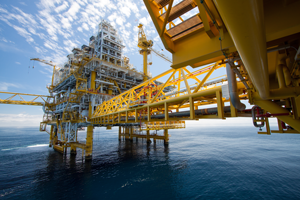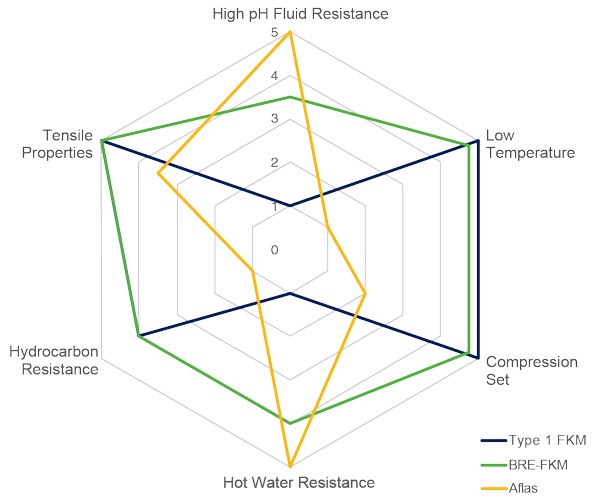Article re-posted with permission from Parker Hannifin Sealing & Shielding Team.
Original content can be found on Parker's Website and was written by Nathaniel Sowder, business development engineer, Parker Hannifin O-Ring & Engineered Seals Division.
 Fluids play a critical role in sustaining life. Keeping animals and humans hydrated and helping plants grow are obvious ways. Less obvious ways include moving cargo around the world and keeping equipment operating (hydraulic oils, coolants, engine oils, etc.). All these applications require seals of some sort ranging from public water systems to hydraulic pumps. What happens when these fluids become aggressive? People typically think of acids as being an aggressive media, but for many fluoroelastomers, bases are more aggressive presenting severe challenges. Using material science and technology, Parker has created a new class of Base Resistant (fluoro) Elastomer (BRE) compounds.
Fluids play a critical role in sustaining life. Keeping animals and humans hydrated and helping plants grow are obvious ways. Less obvious ways include moving cargo around the world and keeping equipment operating (hydraulic oils, coolants, engine oils, etc.). All these applications require seals of some sort ranging from public water systems to hydraulic pumps. What happens when these fluids become aggressive? People typically think of acids as being an aggressive media, but for many fluoroelastomers, bases are more aggressive presenting severe challenges. Using material science and technology, Parker has created a new class of Base Resistant (fluoro) Elastomer (BRE) compounds.
The history of FKM and Aflas®
The beginning of useful fluoroelastomer polymers (FKM) was introduced in the early 1960’s. Since that time, FKM materials have come a long way and improved in many areas ranging from fluid resistance to low and high temperature performance. In 1975, Asahi Glass Ltd. introduced a new polymer under the name of Aflas®. The composition of this polymer gives it a slightly improved high temperature range, but also imparts the polymer with a wider range of fluid compatibility. One area that Aflas® excels in is high pH (basic) fluids. Traditional FKM polymers will become stiff and embrittled with long term exposure to basic fluids. While Aflas® has benefits in basic fluids, it also has some significant downsides. The two main downsides are it’s low temperature performance and swell in some hydrocarbons. One measure of low temperature performance is a materials glass transition temperature (abbreviated as Tg). The Tg is the temperature at which materials transition from being soft and pliable to being rigid and glassy. The Tg of many Aflas® materials is -3°C, whereas some FKMs can reach below -40°C.
 Innovation and Material Technology
Innovation and Material Technology
Parker’s new BRE compounds offer the best of both worlds. Designed specifically for the oil and gas market but applicable to any market space, these materials exhibit improved base resistance over traditional FKMs while possessing improved low temperature and hydrocarbon performance over Aflas®.
These new compounds are named VP309-80 and VP316-90 . They are 80 and 90 Shore A durometer respectively. Both are designed to be all-encompassing material options and possess a balance of properties between traditional FKM and Aflas®. As shown in the spider chart at the right, Parker’s BREs are formulated to fill a broader design space when compared to ASTM D1418 Type 1 FKMs and Aflas®. Even when compared to more chemically resistant FKM types, Parker’s BRE compounds show improvements in high pH fluid resistance.
Utilizing Parker’s experience in molding and extrusion technologies, these new compounds can be processed into a wide variety of products ranging from small O-rings to thick cross section downhole packing elements. Combining the BRE compounds with Parker LORD’s adhesive options result in a material that can be molded to a variety of substrates and resist aggressive media in harsh conditions. Both VP309-80 and VP316-90 are ISO 23936-2:2011 Rapid Gas Decompression (RGD) tested and approved. VP316-90 has also been tested in H2S according to NACE TM0187.
While these materials were specifically developed for the oil and gas market segment, they can find uses in a variety of other markets such as aggressive gear lubes for pumps and aggressive fluids utilized in automotive and chemical processing industry (CPI) applications.
For more information on these materials, download our the Parker OES 7004 brochure or visit the Parker O-Ring & Engineered Seals Division website to chat with our applications engineers.
